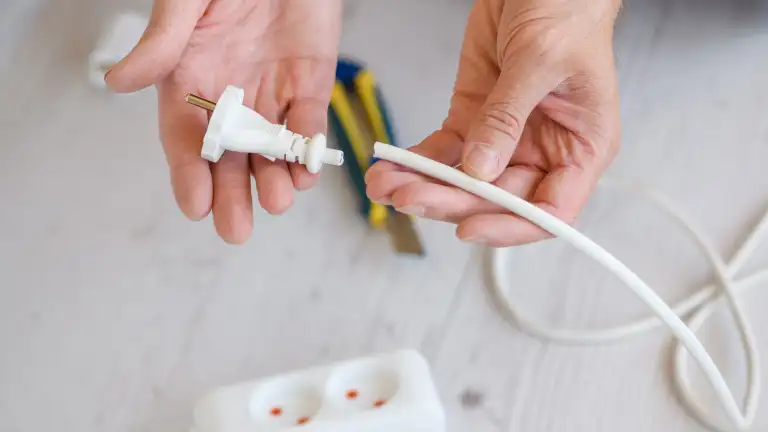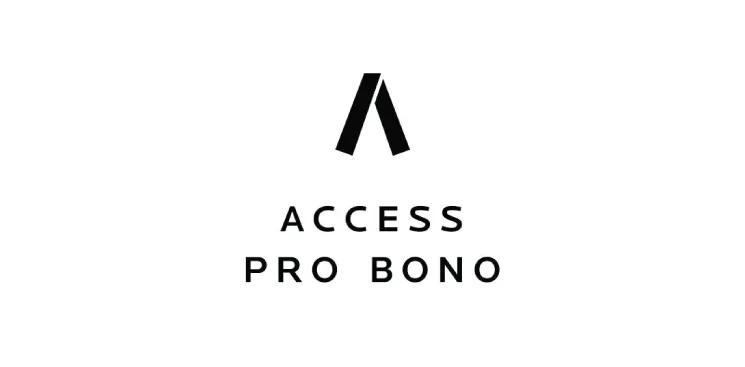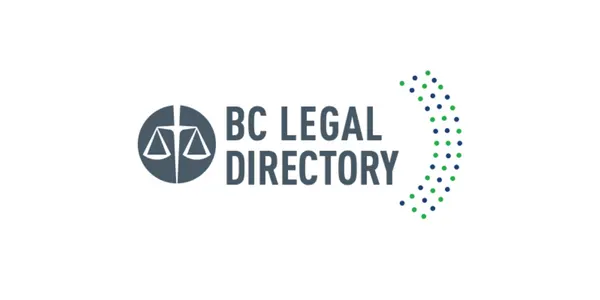
If you're injured by a defective product, you can claim compensation.
If you're hurt when using a product the way it was intended to be used, you may have a product liability claim. You might be able to claim compensation from the manufacturer or someone else in the product’s distribution chain. But you'll need to prove several things. These include that they were negligent and that their negligence caused or contributed to your injuries. Learn how the law deals with these types of claims.
What you should know
“While washing the dishes after dinner, I put a glass casserole dish in the sink, and heard a loud popping noise. The dish shattered in my hands, slashing my wrist. I missed several weeks of work recovering. A friend told me about a case in Ontario where a guy had the same thing happen to him. Apparently the company that made the dish was found liable for his injuries. It’s got me curious to learn more.”
– Thomas, Burnaby, BC

Thomas is referring to a real Ontario case. Like him, when you buy a product — be it a casserole dish or a cellphone or a car — you expect it to work, be safe to use, and do what it’s supposed to do. You buy a new car, for example, assuming the air bags won’t suddenly explode.
But stuff happens. Sometimes things don’t work the way they should. A product is defective when there’s something wrong with it and the problem impairs its quality or normal use. A cellphone or toaster that doesn’t work when you take it out of the box, or stops working shortly afterwards, is likely defective.
Even worse is when a defective product is unsafe and causes an injury or death. If someone is hurt when using a product the way it was intended to be used, the law can help. Burns from sunscreen, falls due to defective bike frames, or choking because of poorly designed toys or clothing — these are examples where the consumer can sue for damages for their injuries. Let’s look at how the law deals with these types of situations.
If you’re injured because of a faulty product, who’s on the hook? Is it the retailer who sold it to you? The manufacturer who made or assembled it? Or maybe the person or company who designed it in the first place?
In fact, everyone in a product’s distribution chain — from the manufacturer to the seller (including an online retailer), and any number of suppliers, wholesalers, and distributors in between — is responsible for ensuring that a product:
functions normally and safely, and
won’t cause you — the consumer — injury or financial loss when you use it as it’s meant to be used.
When a faulty product injures you or damages your property, you may have what the law calls a product liability claim. It’s when you believe the negligence of a person or business in the distribution chain caused your injury, and you’re seeking damages.
If you’re hurt by a faulty product, you can’t assume you’ll automatically get compensation. You have to prove a number of things when you bring a product liability claim.
What you must show
To successfully bring a claim against the manufacturer (or anyone else in the distribution chain), you must prove they were negligent and that their negligence caused or contributed to your injuries.
You can prove negligence in a couple of ways. One is by showing the product was defective under ordinary use or had a propensity to injure, and that the manufacturer knew or reasonably should have known its product was dangerous.
A second way to prove negligence is by showing the manufacturer didn’t sufficiently warn about the dangers its product posed, dangers they either knew about or reasonably should have known about.
If you can prove the manufacturer was negligent, you’re part way there. But not fully. You also have to show the manufacturer’s negligence caused or contributed to your injuries. You must show your loss would not have occurred but for the negligence of the manufacturer.
Defences a manufacturer may lean on
Meanwhile, the manufacturer can point to a number of things to argue they shouldn’t be responsible for your injuries, including:
you didn’t properly use the product or maintain it
you (or someone else) fixed or changed the product improperly or in an unexpected way
some other unexpected act intervened and caused or contributed to your injuries
you signed a waiver or other legal document giving up your right to sue (note these must be drafted very precisely to be enforceable)
Let’s look at an example
Say you recently bought a new electric bicycle. As you’re riding along, boom! One of the tires blows out. You veer sharply to the side, and collide with a car, suffering injuries.
In bringing a negligence claim against the e-bike manufacturer and retailer, you’ll first need to prove that the tire was defective under ordinary use, or that they didn’t sufficiently warn about the risks in using the e-bike.
You’ll also need to show they knew or reasonably should have known of the dangers involved.
And then you’ll need to show that their negligence caused or contributed to your injuries.
For their part, the manufacturer or retailer might argue you didn’t have the tire properly inflated, and that caused the tire to blow. Or that the accident happened because you were riding too fast for the conditions (as was the case here for a rider of an all terrain cycle who flipped when going too fast over rough and unfamiliar ground).
In other words, you’ll have to show it was the other party’s negligence — and not how you were using the e-bike — that caused the accident and your resulting injuries.
Let’s go a little deeper. If you’re injured by a faulty product, there are three types of negligence that might come into play.
Negligent design
Typically, a product is conceived and designed. Then it’s manufactured, marketed, and sold. It’s in the design stage that a manufacturer’s duties begin. A manufacturer must be reasonable in designing its product. They don’t have to use the safest design that exists, or even the best materials. But they do have to use a reasonable design in the circumstances. If you can prove there was another reasonable and safer design available but it wasn’t used, that can underpin a claim the manufacturer was negligent. That’s unless the manufacturer can show the alternate design would have been too expensive or would lead to other problems.
A defect at the design stage means that all the products manufactured (not just one) will be defective and potentially dangerous. For example, a car with faulty airbags, or a toy with small parts that children can swallow.
Negligent manufacture
A product might be properly designed. But then the manufacturer made a mistake when putting it together. This might include using bad or expired parts or ingredients, or attaching parts incorrectly. It could involve adding something that shouldn’t be added or not adding something that should have been. Or there may not have been proper systems of inspection, quality assurance, and quality control in place.
In all these scenarios, the end result is a faulty product. That is, a one-off dud (like that electric toothbrush that stopped working three days after you bought it).
A manufacturer can be held accountable when its negligence in manufacturing a product causes you injury.
Failure to warn
“Choking hazard, small parts, not suitable for children under 3.”
“Danger, extremely flammable. May irritate eyes and skin. Harmful or fatal if swallowed.”
You’ve probably seen product labels with warnings like these. When a manufacturer knows, or reasonably should have known, that their product carries a safety risk, they have to warn consumers. They don’t have to warn about all potential risks related to their product (people can find eccentric misuses for just about anything). But they do have to warn of the risks they know about or reasonably should know about.
Typically, these include giving cautions about using the product improperly or about the potential health effects of the product. This is usually done through written instructions or warning labels on the product, or packed with it.
When a product doesn’t provide enough warning or instruction about how to use it safely, that can support a claim the manufacturer was negligent.
When there are safety concerns about a product, a recall will typically be issued. This is when the manufacturer, distributor or retailer — or the government acting with them or on its own — notifies consumers that there are health or safety risks posed by a product. Here are two examples: a recall on disposable face masks made with graphene, and a recall on a child’s toy considered a choking hazard.
If a product is recalled, you may be asked to return it, typically in exchange for compensation or a replacement product. Where a fix is simple and can be done safely, you may be offered a free repair kit or a link to a video explaining the steps.
Recalls help protect consumers from unsafe goods. That’s why the federal government keeps an up-to-date list of all product recalls. A recall can also play a role in a product liability claim. The fact that a product was recalled can support a claim that it was dangerous or should have had stronger warnings.
Health Canada’s authority to recall a product
Under this law, Health Canada can issue a recall to address a danger to health or safety posed by a consumer product. For details, see their quick reference guide.
If you’ve been injured by a defective product, you may be wondering what kind of money you might be able to get. If another party is legally at fault for your injuries, you can be paid damages for your losses. This involves figuring out what your injuries have cost you monetarily, physically, and mentally. In some cases, damages also punish the other party for their conduct.
You can negotiate with the other party to try to agree on an amount of damages. Or you may be able to bring a legal action, seeking to have damages awarded by a court.
The types of damages
Most damages in a product liability case are to compensate you for what was lost due to the injury. The guiding principle is to restore you to the position you would have been in but for the incident.
Some damages are relatively easy to quantify — like reimbursing medical bills or property damage. But it's harder to place a monetary value on pain and suffering or the inability to enjoy hobbies because of physical limitations caused by lingering injuries.
Here are some types of damages that can come into play:
Pain and suffering. These damages, called non-pecuniary damages, are to compensate an injured person for pain, suffering, loss of enjoyment of life, and loss of amenities.
Income. An injured person can be compensated for wages lost due to the incident — both income they’ve already lost and income they would have been able to make in the future if the incident hadn’t happened.
Special damages. These are out-of-pocket expenses for treatments, medications, and so on.
Cost of future care. These damages are for the cost of treatments in the future, after any settlement or trial.
Learn more about damages on our page about how much your personal injury claim may be worth.
Work out the problem
Select the steps that make sense in your situation
If you’re injured by a defective product, you don’t have to go through the steps in order. Choose the steps and sequence that best fit your situation.
If you’re injured by a defective product, document the incident and your injuries as best you can, as soon as you can.
Take photos. Take photos or a video of your injuries and the product that caused your injuries.
Make detailed notes. Write down what happened, including when and where your injury took place and details about how it happened. Describe your injuries in detail, and any damage to your personal property.
Talk to any witnesses. If someone witnessed the incident, get their name and contact information. Ask them to give you a written statement of what they saw. If they took a video, ask them to share it with you.
About that defective product
Keep the product that caused your injury as is (don’t try to fix it). Find and keep the receipt (your proof of purchase) and any warranties for the product.
Within 24 hours (or as soon as possible) after the incident, you should see your doctor or go to the hospital. Do this whether your injury is serious or not — you might be more badly hurt than you think.
The medical professional can examine you and recommend any necessary treatment and medication. They will also document your description of the incident, and your injuries, treatment, and prognosis.
You should continue seeing your doctor, and any other health professional you’ve been referred to (such as a physiotherapist or a massage therapist), on a regular basis. Follow their recommendations as best you can.
The importance of your medical records
Your medical records will play a critical role in proving the defective product caused your injuries. They’re also key in showing the severity and duration of your injuries, and how they impact your life. All this will affect the damages you might get.
Product liability cases are complex. You should consider contacting a lawyer and getting legal advice — especially if you’ve been seriously injured. See below under who can help.
A lawyer can explain your legal options and how long you have to take certain steps. They can also talk to you about who to sue. This can be tricky, as retailers are usually local but manufacturers are often outside Canada. Who you decide to sue can affect which court or tribunal a legal action is started in; see step 7 below.
Some lawyers will take a product liability case on a contingency fee basis. This means you don’t have to pay any legal fees during the case. Instead, any fees are paid based on an agreed-on percentage of the money they recover for you. You do have to pay out-of-pocket expenses (such as for medical records, long-distance calls, and so on). In a case of this type, the maximum contingency fee percentage is 40%.
After you get legal advice, consider reporting the defect to the manufacturer of the product that caused your injury. (If you have a lawyer, they’ll make the report.) Tell them what happened so they can investigate your complaint and deal with the faulty product.
Using social media
You might want to share information about your situation and injuries on social media. It could be helpful to spread the word about the defective product; it might spare others the same fate. And businesses keen to protect their reputation may be eager to resolve your claim more quickly.
You’ll want to learn more about the product that caused your injuries. Google the product and the word reviews or complaints to see what others are saying. Check the federal government’s product recall list to see whether the product is listed there.
You can search for cases similar to yours on CanLII. This is a database of court cases from the last 30+ years. You can search by the type of product involved to get an idea of how courts have decided on liability. You can search by the type of injuries you suffered to see what types of damage awards have been made.
Because this area of law is complex, it’s best to get legal advice. A lawyer can help you understand what your chances of success are, and what might be reasonable compensation in your case. See below under who can help for options for legal advice.
Stay organized
Keep your notes and all your evidence and research in one place, like in a file folder, binder, or on your phone or computer.
If you’re seeking compensation for your injuries from the manufacturer or seller, you might try resolving the matter directly with them (or their insurer or lawyer). If that doesn’t work, consider mediation. This involves meeting with a neutral third party (a mediator). They’ll work to help you and the others involved reach an agreement. Mediation is often quicker and can be less expensive than taking legal action. Ideally, you should get legal advice before accepting a compensation amount being offered.
Finding a mediator
You can search for a mediator based on the community you live in and the type of matter you have. On the ADR Institute website or the Mediate BC website, select personal injury for the area of expertise or practice.
If you can’t settle the matter, then to get compensation for your injuries, you’ll need to bring a legal action against the manufacturer or retailer of the defective product (or other parties in the chain of distribution).
First, check if a lawsuit has already been started
Before you do, though, check if legal action about the defective product has already been started. To do this, type the name of the defective product and legal action into Google. It’s possible a law firm may have started either a class action lawsuit or several individual claims on behalf of consumers injured by the same defective product. If so, contact the law firm to find out if they can help you with your case.
Where to bring your claim
If a legal action hasn’t already been started, you can start one.
You may be able to bring your claim to the Civil Resolution Tribunal if it’s for less than $5,000, is against a person or business in BC, and is the kind of dispute covered by the tribunal. This online system encourages a collaborative approach to resolving disputes.
You can bring an action in small claims court if your claim is between $5,000 and $35,000, is against a person or business in BC, and is covered by this level of court. This is faster and less complicated than suing in the British Columbia Supreme Court. You’ll need to start an action in BC Supreme Court if your claim is over $35,000.
Common questions
Generally speaking, you have a two-year window to bring a legal action arising from a defective product. This limitation period, as it’s called, starts to run once you discover your legal claim. A claim is said to be discovered on the first day you knew, or reasonably ought to have known, that you suffered an injury that was caused by the party you’re suing.
For more on how limitation periods work, see this page on starting a lawsuit.
Who can help

Access Pro Bono's Legal Advice Clinics
Volunteer lawyers provide 30 minutes of free legal advice to people with low or modest income.

Access Pro Bono’s Everyone Legal Clinic
Clinicians provide affordable fixed-fee services on a range of everyday legal problems.

BC Legal Referral Service
Helps you connect with a lawyer, notary or paralegal for a free 15- to 30-minute consult to see if you want to hire them.

BC Legal Directory
Search for a lawyer by community, area of law, or language spoken. From the Canadian Bar Association, BC Branch.

